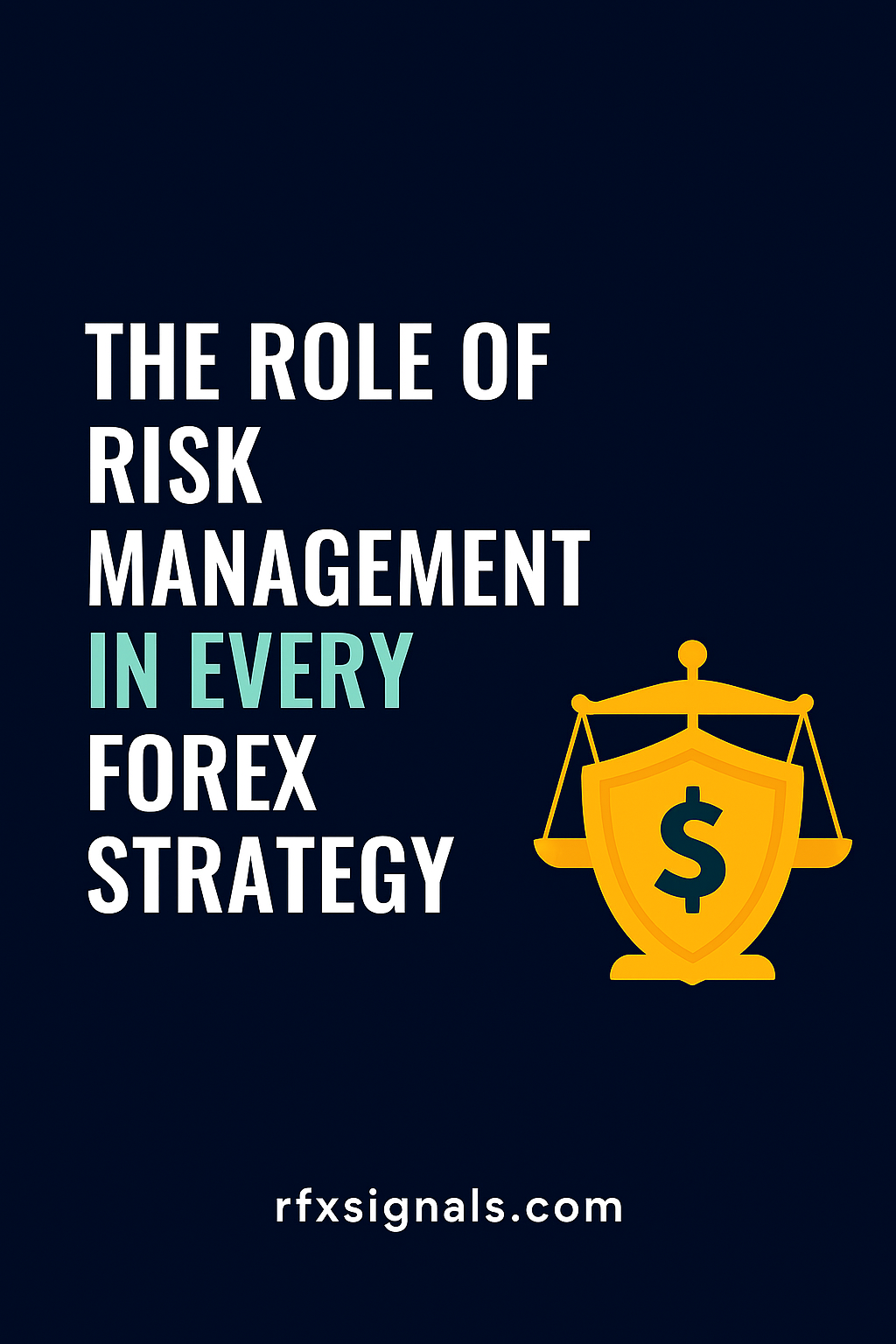
The Role of Risk Management in Every Forex Strategy
Great strategies win on paper; great risk management wins in the real world. While many traders obsess over indicators or entry timing, the long-term difference between accounts that grow and accounts that blow up is almost always one thing: risk management. This article explains why risk controls are the backbone of every forex strategy and gives practical, repeatable rules you can implement today.
Why risk management matters more than the 'perfect' strategy
Strategies have edges (probability >50%) and losses are inevitable. Risk management defines how those losses impact your account. Two traders with the same strategy can have wildly different outcomes depending on position sizing, leverage, and drawdown controls. Put bluntly: you can have a modest edge and still compound wealth if you manage risk well; but even the best edge will fail if you over-leverage or ignore drawdowns.
Core elements of forex risk management
Effective risk management is multi-layered. The most important components are:
- Position sizing: How large each trade is relative to account equity.
- Stop-loss placement: Where you exit a losing trade to limit damage.
- Leverage control: Using leverage conservatively to avoid margin stress.
- Correlation checks: Ensuring your portfolio isn't secretly overexposed.
- Drawdown rules: Predefined actions when losses exceed thresholds.
- Operational safeguards: max daily loss limits, session limits, and emergency off-ramps.
Position sizing — the single most powerful tool
Position sizing turns strategy into risk. Use a clear formula:
Position size = (Account equity × Risk per trade) / Trade risk in account currency
Example: $10,000 account, risk 1% ($100). If your stop is 50 pips and pip value per lot is $1, you trade 2 mini‑lots? — no. Always convert properly to match lot/pip values. Automate this calculation in your platform or spreadsheet to eliminate errors.
Stop placement — structured, not arbitrary
Stops should be based on market structure or volatility, not on how much you want to risk. Common methods:
- Structure-based stops: below support / above resistance or recent swing lows/highs.
- Volatility-based stops: multiples of ATR (e.g., 1.5× ATR(14)).
- Time-based exits: exit after a predetermined time if price hasn't moved (useful for scalps).
Choose one primary method for your strategy and stick to it — mixing stop logic leads to inconsistency.
Leverage — handle with respect
Leverage amplifies returns and losses. Professional traders use leverage as a tool, not as a shortcut. A few practical rules:
- Keep effective leverage low: most pros run far below broker maximums (often 10:1 or less for swing strategies).
- Measure leverage in terms of margin usage and potential loss percentage, not just ratio (e.g., a 2:1 leveraged account can still be risky if stops are wide).
- Reduce leverage during news events or increased volatility.
Correlation & portfolio risk
Opening many positions that look different can still create concentrated exposure. For example, long EUR/USD and long GBP/USD are both USD‑short positions — a USD shock hurts both. Use a correlation matrix to calculate net directional exposure and size positions to limit aggregate risk.
Drawdown rules & psychological resilience
Define rules for drawdowns before you trade. Common thresholds:
- Stop trading and review if equity drops 5–10% in a short period.
- Reduce position size after a string of losses until performance stabilizes.
- Have clear re-entry criteria after a drawdown (e.g., positive expectancy on demo or a fixed time-out period).
These rules protect capital and emotions; they prevent the classic 'double down' behavior that kills accounts.
Operational controls — automating discipline
Operational safeguards remove human impulse from the equation. Examples:
- Max daily loss (e.g., stop trading for the day after losing 2–3% of equity).
- Session limits (e.g., max 10 trades per day or max 3 straight losses before pause).
- Guaranteed stop-losses where available for headline risk (note: may cost extra).
Calculating expectancy — the acid test
Expectancy tells you whether a strategy will make money over time:
Expectancy = (Win% × Average Win) − (Loss% × Average Loss)
Combine expectancy with your average risk per trade to estimate long-term growth and required sample size. If expectancy is positive, disciplined risk management will allow you to realize that edge; if negative, no amount of leverage will help.
Practical checklist — implement today
- Write your risk rules: risk per trade, max daily loss, leverage cap.
- Create an automated position-sizing tool (spreadsheet or script).
- Define stop placement method (structure or ATR) and use it consistently.
- Monitor correlations and limit aggregate exposure.
- Set drawdown exit rules and a review process.
- Keep a trading journal recording rule adherence and deviations.
Link Building & Community Redirects
Want practical, risk-managed trade ideas, annotated charts, and community support? Redirect clients to RFXSignals for signal streams and onboarding. Join our channels for real-time examples of position sizing, stop placement, and drawdown management:
Conclusion
Risk management is not an optional add-on — it's the operating system that makes strategies durable. Focus first on protecting capital: position sizing, disciplined stops, leverage control, correlation awareness, and predefined drawdown rules. With a repeatable risk framework in place, even modest trading edges can compound reliably. Use the checklist above and leverage community channels like RFXSignals to practice and receive real-world, risk-conscious trade guidance.
© 2025 RFXSignals — Educational content only. Trading involves risk. Past performance is not indicative of future results.